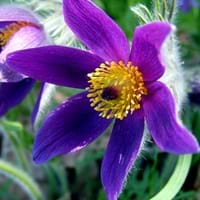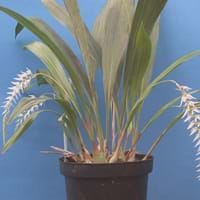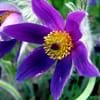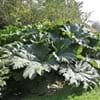Life Span
Annual and Perennial
Perennial
Origin
Europe, Eastern Europe, Southern Europe, Western Europe, United Kingdom
Southeastern Asia
Types
Pulsatilla vulgaris, Pulsatilla vulgaris rubra, Pulsatilla vulgaris alba
Not Available
Number of Varieties
Not Available
Habitat
meadows, Slopes, Wooded slopes
Wild
USDA Hardiness Zone
5-7
10-13
Sunset Zone
2b, 3a, 3b, 4, 5, 6, 15, 16, 17
Not Available
Habit
Clump-Forming
Clump-Forming
Flower Color
Indigo, Purple, Violet
Light Yellow, Yellow green, Tan
Flower Color Modifier
Not Available
Not Available
Fruit Color
Greyish Brown
Not Available
Leaf Color in Spring
Light Green
Light Green
Leaf Color in Summer
Light Green
Light Green
Leaf Color in Fall
Light Green
Light Green
Leaf Color in Winter
Light Green
Light Green
Leaf Shape
Rosette
Long Elliptic
Plant Season
Spring
Spring, Summer, Fall, Winter
Sunlight
Full Sun
Partial Sun, Partial shade
Type of Soil
Loam, Sand
Not Available
The pH of Soil
Neutral, Alkaline
Acidic, Neutral
Soil Drainage
Well drained
Well drained
Bloom Time
Early Spring, Spring
Spring, Late Spring, Fall
Tolerances
Drought
Not Available
Where to Plant?
Ground, Pot
Container, Ground, Pot
How to Plant?
root cutting, Seedlings
Divison, Seedlings, stem tip cuttings
Plant Maintenance
Medium
Medium
Watering Requirements
Medium
Requires regular watering
In Summer
Lots of watering
Lots of watering
In Spring
Moderate
Moderate
In Winter
Average Water
Average Water
Soil pH
Neutral, Alkaline
Acidic, Neutral
Soil Type
Loam, Sand
Not Available
Soil Drainage Capacity
Well drained
Well drained
Sun Exposure
Full Sun
Partial Sun, Partial shade
Pruning
Remove damaged leaves, Remove dead branches, Remove dead leaves
Remove damaged leaves, Remove dead branches, Remove dead leaves
Fertilizers
All-Purpose Liquid Fertilizer
All-Purpose Liquid Fertilizer
Pests and Diseases
Cutworms, Larvae of Agave Weevil
bees
Plant Tolerance
Drought
Drought
Flower Petal Number
Single
Single
Foliage Texture
Fine
Coarse
Foliage Sheen
Matte
Matte
Attracts
Not Available
Bees, Butterflies, Hummingbirds
Allergy
convulsions, Diarrhea, Not Available, Stomach pain, Vomiting
Not Available
Aesthetic Uses
along a porch, deck or patio, Showy Purposes
Showy Purposes
Beauty Benefits
Not Available
Not Available
Environmental Uses
Air purification
Air purification
Medicinal Uses
Not Available
Not Available
Part of Plant Used
Not Available
Flowers
Other Uses
Showy Purposes
Oil is used in perfume, soaps, creams, etc.
Used As Indoor Plant
No
Yes
Used As Outdoor Plant
Yes
Yes
Garden Design
Alpine, Mixed Border, Rock Garden / Wall
Container, Hanging Basket, Houseplant, Rock Garden / Wall, Tropical
Botanical Name
PULSATILLA vulgaris
DENDROCHILUM latifolium
Common Name
Pasque Flower, wind flower, prairie crocus, Easter Flower, meadow anemone
Dendrochilum Orchid, Large-leaved Chain Orchid
In Hindi
Pasque Flower
Dendrochilum Orchid
In German
Kuhschellen
Dendrochilum Orchid
In French
Pasque Flower
Dendrochilum Orchid
In Spanish
Pasque Flower
Dendrochilum Orchid
In Greek
Pasque Flower
Dendrochilum Orchid
In Portuguese
Pasque Flower
Dendrochilum Orchid
In Polish
Sasanka
Dendrochilum Orchid
In Latin
Pasque Flower
Dendrochilum Orchid
Phylum
Vascular plant
Tracheophyta
Class
Magnoliopsida
Liliopsida
Order
Ranunculales
Asparagales
Family
Ranunculaceae
Orchidaceae
Genus
Pulsatilla
Dendrochilum
Clade
Angiosperms, Eudicots
Angiosperms, Monocots
Subfamily
Not Available
Epidendroideae
Properties of Pasque Flower and Dendrochilum Orchid
Wondering what are the properties of Pasque Flower and Dendrochilum Orchid? We provide you with everything About Pasque Flower and Dendrochilum Orchid. Pasque Flower doesn't have thorns and Dendrochilum Orchid doesn't have thorns. Also Pasque Flower does not have fragrant flowers. Pasque Flower has allergic reactions like convulsions, Diarrhea, Not Available, Stomach pain and Vomiting and Dendrochilum Orchid has allergic reactions like convulsions, Diarrhea, Not Available, Stomach pain and Vomiting. Compare all the properties and characteristics of these two plants. Find out which of these plant can be used as indoor plant. If you are interested to decorate your house and garden, find out aesthetic uses, compare them and select the plant which will beautify your surrounding. Along with beautification, try comparing medicinal and edible uses of Pasque Flower and Dendrochilum Orchid and you can choose the plant having best and most benefits.
Season and Care of Pasque Flower and Dendrochilum Orchid
Season and care of Pasque Flower and Dendrochilum Orchid is important to know. While considering everything about Pasque Flower and Dendrochilum Orchid Care, growing season is an essential factor. Pasque Flower season is Spring and Dendrochilum Orchid season is Spring. The type of soil for Pasque Flower is Loam, Sand and for Dendrochilum Orchid is Not Available while the PH of soil for Pasque Flower is Neutral, Alkaline and for Dendrochilum Orchid is Acidic, Neutral.
Pasque Flower and Dendrochilum Orchid Physical Information
Pasque Flower and Dendrochilum Orchid physical information is very important for comparison. Pasque Flower height is 12.70 cm and width 15.20 cm whereas Dendrochilum Orchid height is 45.70 cm and width 20.30 cm. The color specification of Pasque Flower and Dendrochilum Orchid are as follows:
Pasque Flower flower color: Indigo, Purple and Violet
Pasque Flower leaf color: Light Green
Dendrochilum Orchid flower color: Light Yellow, Yellow green and Tan
- Dendrochilum Orchid leaf color: Light Green
Care of Pasque Flower and Dendrochilum Orchid
Care of Pasque Flower and Dendrochilum Orchid include pruning, fertilizers, watering etc. Pasque Flower pruning is done Remove damaged leaves, Remove dead branches and Remove dead leaves and Dendrochilum Orchid pruning is done Remove damaged leaves, Remove dead branches and Remove dead leaves. In summer Pasque Flower needs Lots of watering and in winter, it needs Average Water. Whereas, in summer Dendrochilum Orchid needs Lots of watering and in winter, it needs Average Water.





